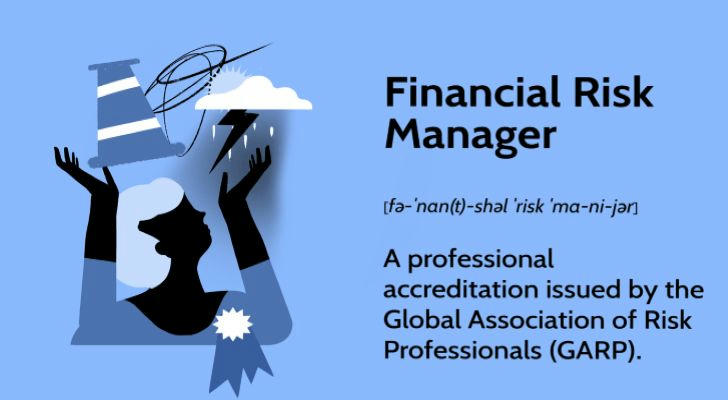Annual salary exceeds $100,000, no top degree required! Financial risk assessor: the hidden treasure of a stable and high-paying career in the United States
Are you anxious about job instability, slow salary growth, or high educational barriers? In the fiercely competitive U.S. job market, finding a career that offers "high income, strong stability, and broad growth" is no easy task. But the Financial Risk Analyst role is precisely that overlooked "golden path."
Amidst high-paying finance careers, one position is rapidly rising: Financial Risk Analyst. No elite degree or investment banking experience is required. If you’re numerically inclined and willing to learn, you can enter the field and easily achieve:
• $100,000+ annual salary
• Healthcare benefits
• 401(k) retirement plan
• Flexible work arrangements
• Strong, growing job prospects

According to the U.S. Bureau of Labor Statistics (BLS), the median annual wage for Financial Risk Analysts is $106,410, rising to $130,000+ in cities like New York and Los Angeles. Even better: demand is surging, while entry barriers are far lower than you think.
Ⅰ. Why Financial Risk Analysts Are the "Low-Barrier, High-Reward" Dream Career
Financial Risk Analysts identify, analyze, and mitigate financial risks for businesses. Their expertise directly impacts profitability and solvency, making them indispensable—and highly compensated.
1. Lower Educational Barriers Than You’d Expect
Contrary to popular belief, you don’t need a master’s or MBA. Industry surveys (Glassdoor/BLS) show:
• Over 42% of practitioners hold only a bachelor’s degree.
• Many enter via "certification + practical experience" (e.g., passing CFA Level I or FRM exams, plus internships/online projects).
This makes it a realistic pathway for career changers and non-Ivy candidates.
2. Stable Demand & Strong Job Growth
As economic uncertainty grows, companies prioritize risk control, fueling demand:
• BLS projects 9% job growth (2022–2032), outpacing the national average.
• Hiring spans banks, insurers, hedge funds, consulting firms, and tech finance departments.
• States like NY, CA, and TX add 4,000+ new roles annually.
Ⅱ. High Income ≠ High Stress: Balance Matters Here
Unlike investment banking or trading, this role emphasizes analysis and strategy—not "burnout" culture.
1. Competitive Salaries & Strong Benefits
• Entry-level (0–3 years): $55,000–$75,000 (Indeed/Payscale)
• Mid-career: $75,000–$106,000
• Senior/Leadership: $106,000–$149,000
• Chief Risk Officer (CRO): $149,000+ + equity
• Benefits: 401(k) matching, health insurance, stock options, paid time off.
• Top firms (hedge funds/tech giants) even offer remote work + unlimited PTO.
2. Predictable Hours, No Late Nights
Tasks (report analysis, modeling, meetings) typically follow fixed schedules. Most non-investment-bank roles rarely require post-7 PM work.
Ideal for career switchers (30+), parents, or anyone valuing work-life balance.
Ⅲ. Clear Entry Paths: Zero Experience? No Problem
No finance background? Numerous courses and certifications bridge the gap.
1. How to Break In:
• Education: Bachelor’s in finance, math, stats, accounting, or economics preferred (CS/physics/STEM also accepted).
• Skills: Master Excel, SQL, Python, or R.
• Certifications: FRM (Financial Risk Manager) is ideal; CFA/CPA also valuable.
• Experience: Start as a junior analyst → gain project experience → advance.
2. Top Resources:
• GARP: Official FRM certification.
• Coursera/edX: University-backed risk management courses.
• LinkedIn Learning: Entry-level data analysis + financial modeling.
Ⅳ. Rapid Advancement: Climb the Ladder in 3 Years
This role is a launchpad, not a dead end. Most professionals achieve significant growth in 3–5 years:
• Junior Analyst: $70,000–$95,000
• Senior Analyst: $100,000–$130,000
• Risk Manager/Team Lead: $140,000–$180,000
• Chief Risk Officer (CRO): $250,000+ + equity
If you seek stability, respect, and upward mobility, this path deserves your attention.

Conclusion: Stable, Lucrative, Growth-Oriented—A Career Worth Pursuing
This isn’t an unattainable dream. It’s a tangible opportunity for anyone aiming to transform their future.
• Low educational barrier: Bachelor’s + skills > pedigree.
• Fast income growth: Solid starting salary + high ceiling.
• Strong benefits: Health coverage, retirement plans, PTO.
• Work-life balance: No health/sacrifice trade-offs.
• Enduring demand: Risk management is foundational to all industries.
In finance, value isn’t limited to traders or bankers. Risk management is modern business’s most critical need.
If you crave stability, growth, professional respect, and a realistic path to a six-figure salary—start researching, planning, and acting today.
